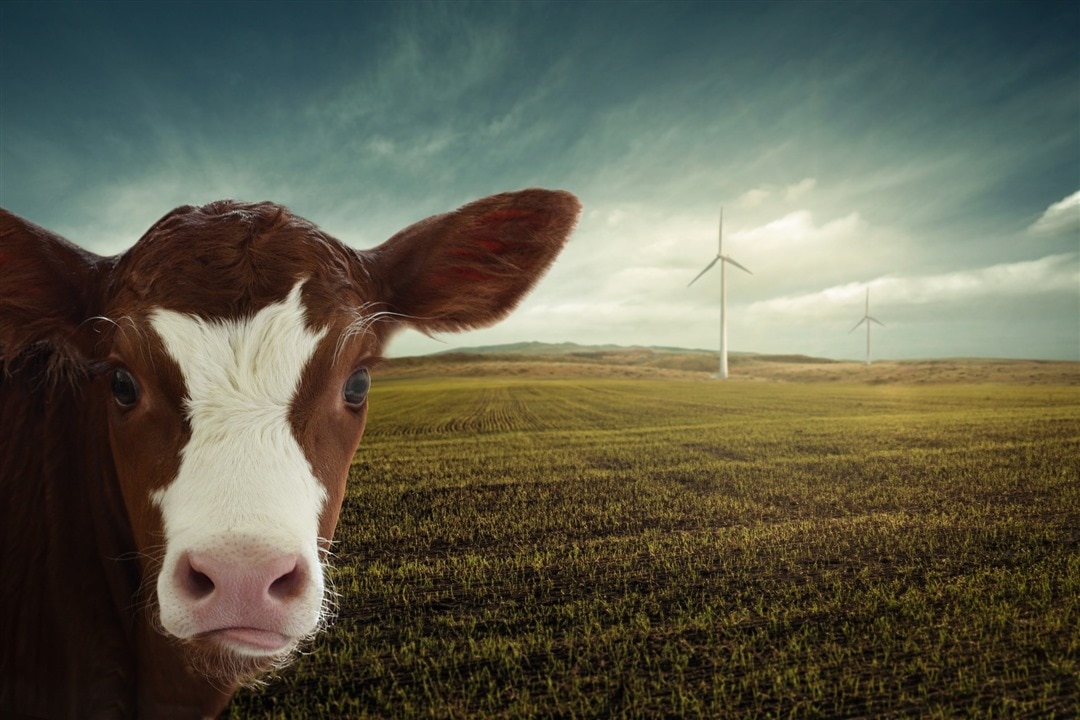
Cow manure could be used by various companies and farms to produce sustainable, clean electricity. (Image Credit: nosita/pixabay)
Break a deal - face the wheel. This news reminded me of Mad Max Beyond Thunderdome’s future, where pig manure was used as fuel for vehicles. A film in 1985 was spot on.
We all know that cow manure can be used as fertilizer or building material. But what may surprise you is that its methane could help produce clean electricity. So far, Bar 20 Dairy, a Kerman, California dairy farm, has excelled with this potentially futuristic technique. This is the first U.S. dairy farm to power its microgrid through biogas. Other companies with excess methane could also benefit from this approach.
So how does the technology work? For starters, both manure and wastewater produced by the farm’s cows are sent and sifted into a 250-million-gallon digester. The liquid settles for a month as methane ascends to the top. Afterward, the gas moves into a skid shifter that splits the methane from hydrogen sulfide and other contaminations. Lastly, solid oxide fuel cells, developed by Bloom Energy, a San Jose-based company, take in the methane to generate electricity with minimal to no carbon emissions.
The fuel cells have a cathode, an anode, and an electrolyte placed between two interconnected plates. A chemical reaction occurs in the electrons, which generates electricity when methane passes through the anode and air passes through the cathodes.
In total, 20 Dairy’s fuel-cell system, which started operating in October 2021, could generate 9.5 million kWh of power each year. That’s enough to power over 750 homes. The farm currently generates more power than it needs, so the remaining distributes to the local utility’s grid for electric-car charging.
Private companies, farms, universities, and healthcare facilities are spending millions to join the microgrid movement, persuaded by cutting their energy costs and relying less on local utilities. According to Guidehouse Insights, microgrid technology and equipment spending could hit $110.5 billion globally by 2030. States such as Hawaii, California, New York, and Massachusetts could benefit from microgrids due to rising electricity prices.
Even then, private parties want to move forward with clean energy sources. Since 2006, California has been trying to make agriculture reduce greenhouse gas emissions. However, methane negatively affects global warming 80 times more than carbon dioxide over a 20-year-period. Approximately 40% of methane emissions are sourced from agriculture.
Bloom’s fuel cells, purchased by Morgan Stanley, Home Depot, and Caltech, rely on natural gas, which can be problematic because it produces greenhouse gas emissions. The company started running a microgrid project for a Silicon Valley company that collects methane from a nearby landfill. It’s also talking to other waste and water management companies to produce electricity by harnessing methane from their treatment facilities.
However, these projects are very costly. Bar 20 Dairy spent approximately $12.5 million on the fuel-cell system and digester. California provided the farm with a $3 million grant, and the owner, Steve Sheheady, applied for a $2.4 million rebate. A bank loan covered the remaining costs.
Other California dairies also want to build their microgrid thanks to Bar 20 Dairy’s early success with the fuel-cell system.
Have a story tip? Message me at: http://twitter.com/Cabe_Atwell
